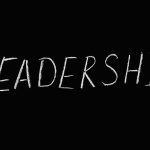A Greener Future: The Potential of Trump 2.0
A Greener Future: The Potential of Trump 2.0
Introduction
The concept of “Trump 2.0” is gaining traction as a potential catalyst for a greener future. This idea explores how a revised approach to environmental policies under a hypothetical second term of Donald Trump could impact sustainability efforts. The discussion centers around balancing economic growth with environmental responsibility.
Key Insights
Revised Environmental Policies
Trump 2.0 suggests a shift in environmental strategies that could include:
- Increased investment in renewable energy sources.
- Encouragement of private sector innovation in green technologies.
- Reevaluation of regulatory frameworks to support sustainable practices.
Economic and Environmental Balance
The potential for Trump 2.0 lies in finding a middle ground between economic interests and environmental stewardship:
- Promoting job creation in the green energy sector.
- Implementing tax incentives for companies reducing their carbon footprint.
- Fostering public-private partnerships to drive sustainable development.
Challenges and Opportunities
While the idea of Trump 2.0 presents opportunities, it also faces significant challenges:
- Overcoming political polarization to achieve bipartisan support.
- Addressing skepticism from environmental groups.
- Ensuring long-term commitment to sustainable policies.
Conclusion
The potential of Trump 2.0 to contribute to a greener future hinges on a strategic blend of policy innovation, economic incentives, and collaborative efforts. While challenges remain, the concept encourages a reimagined approach to environmental responsibility that aligns with economic growth. The success of such an initiative would depend on the ability to unite diverse stakeholders towards a common goal of sustainability.


















